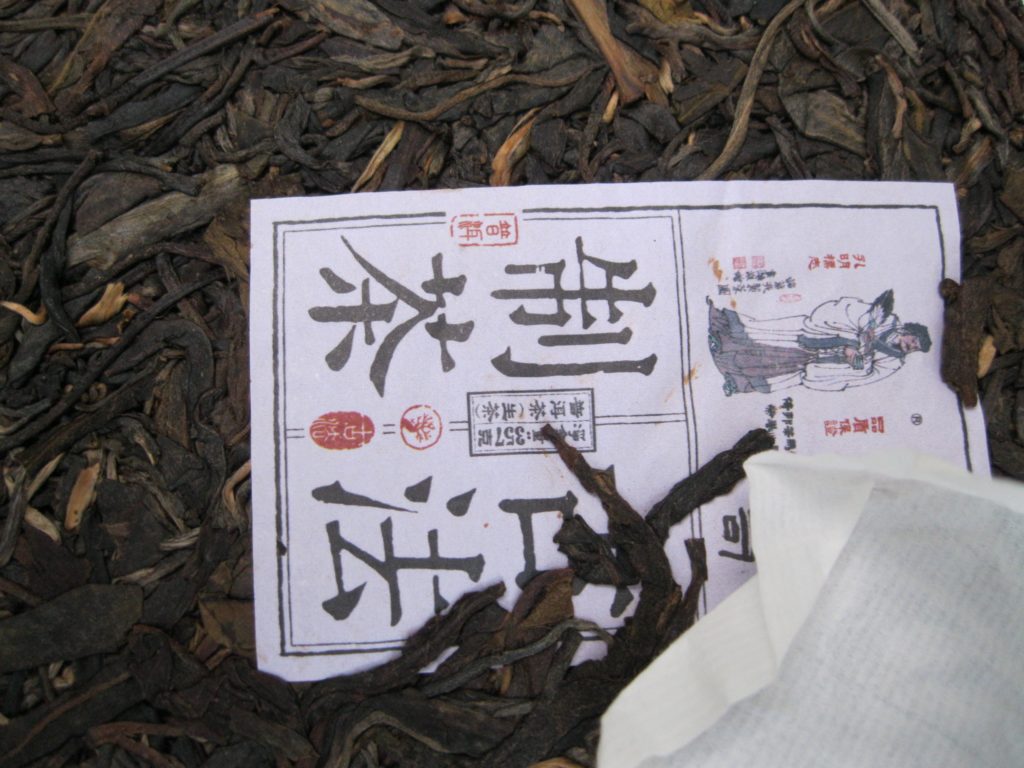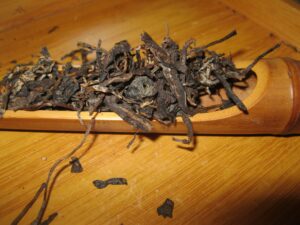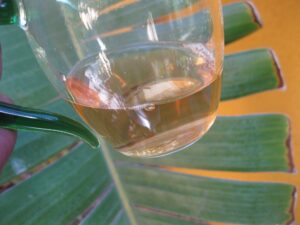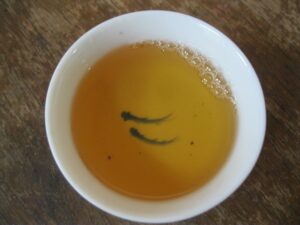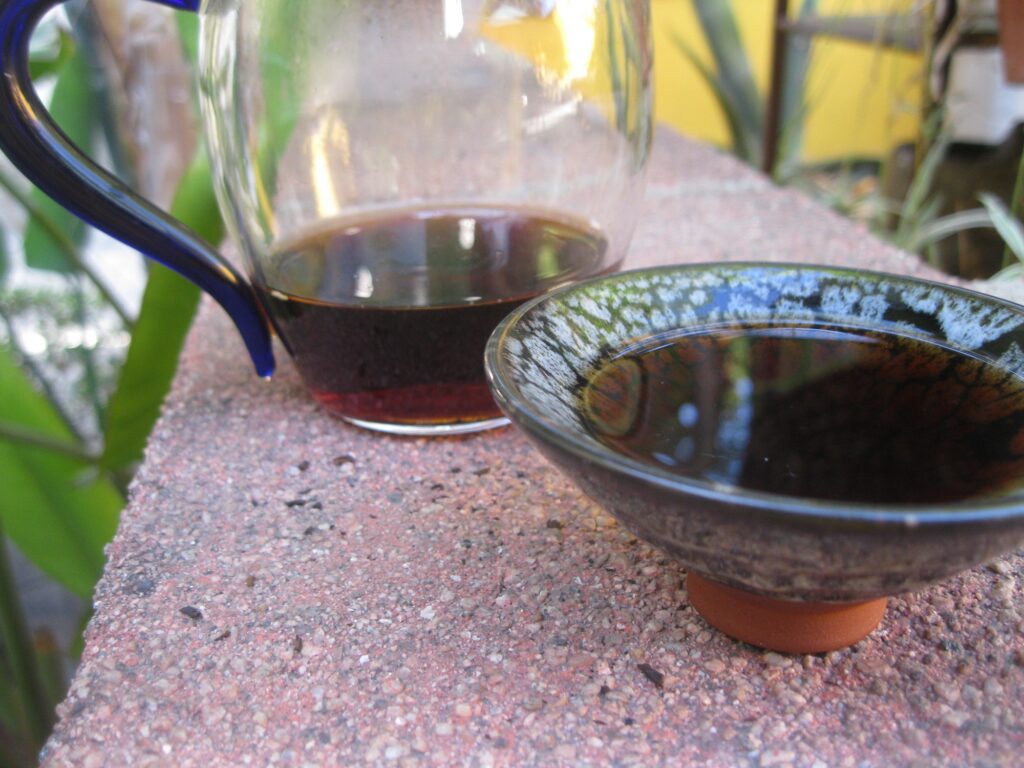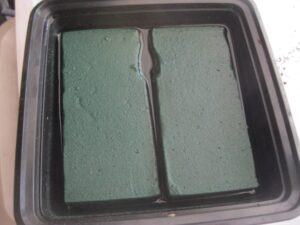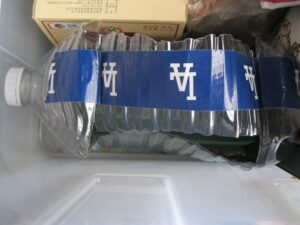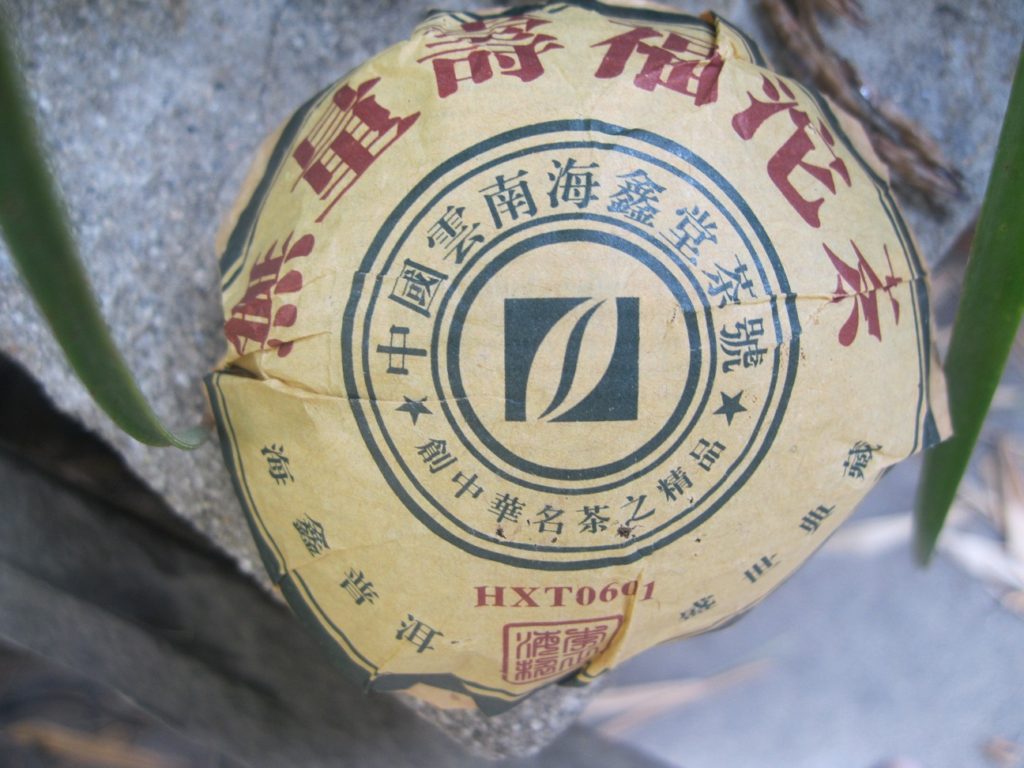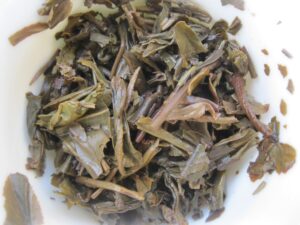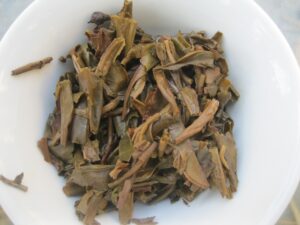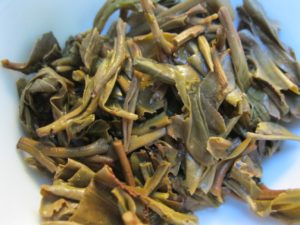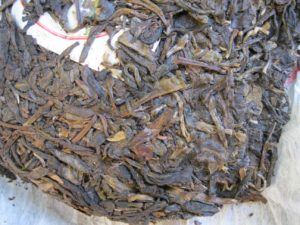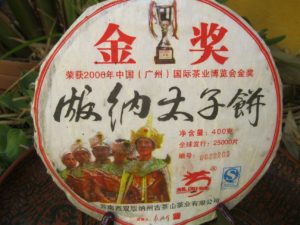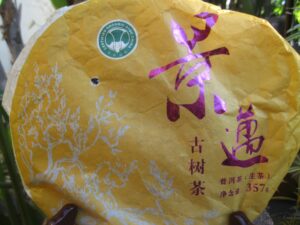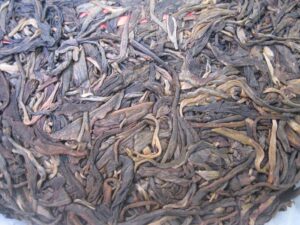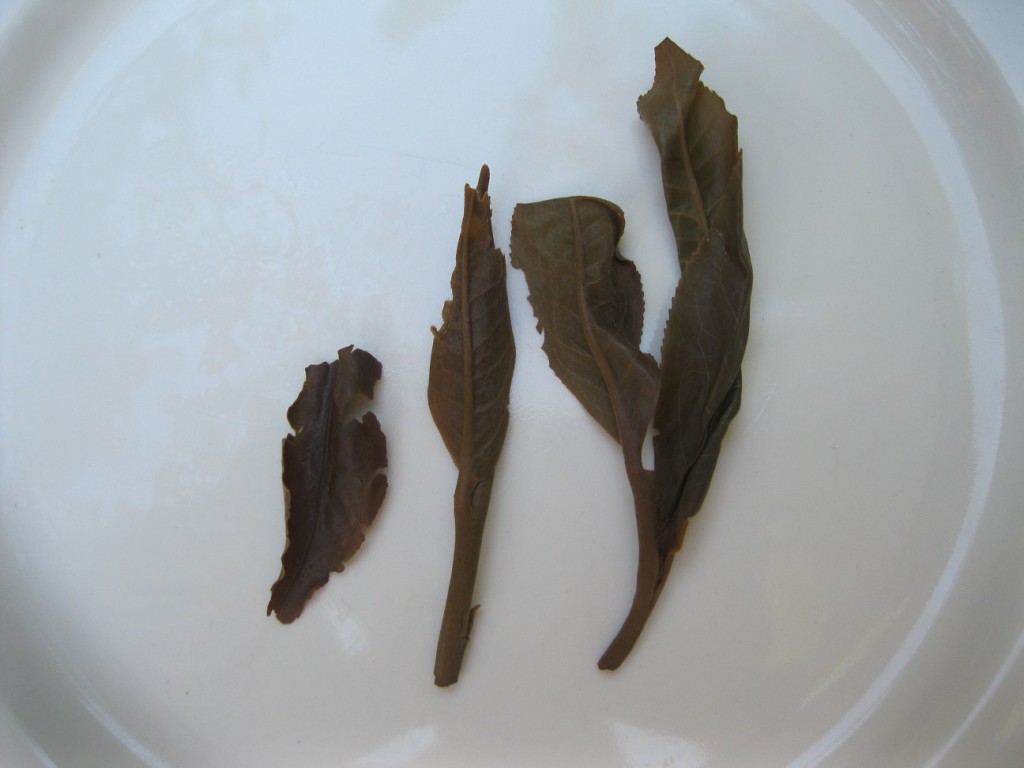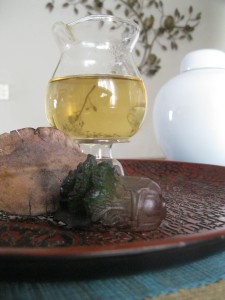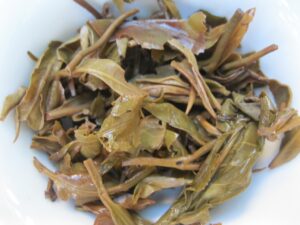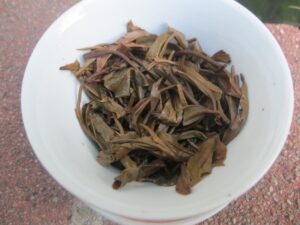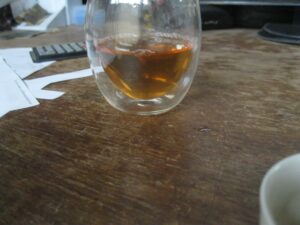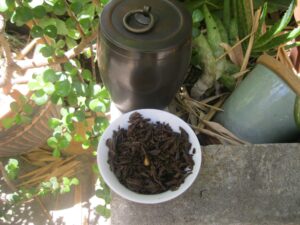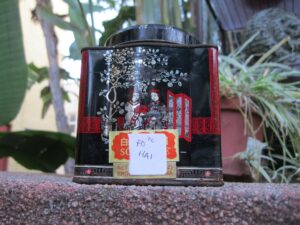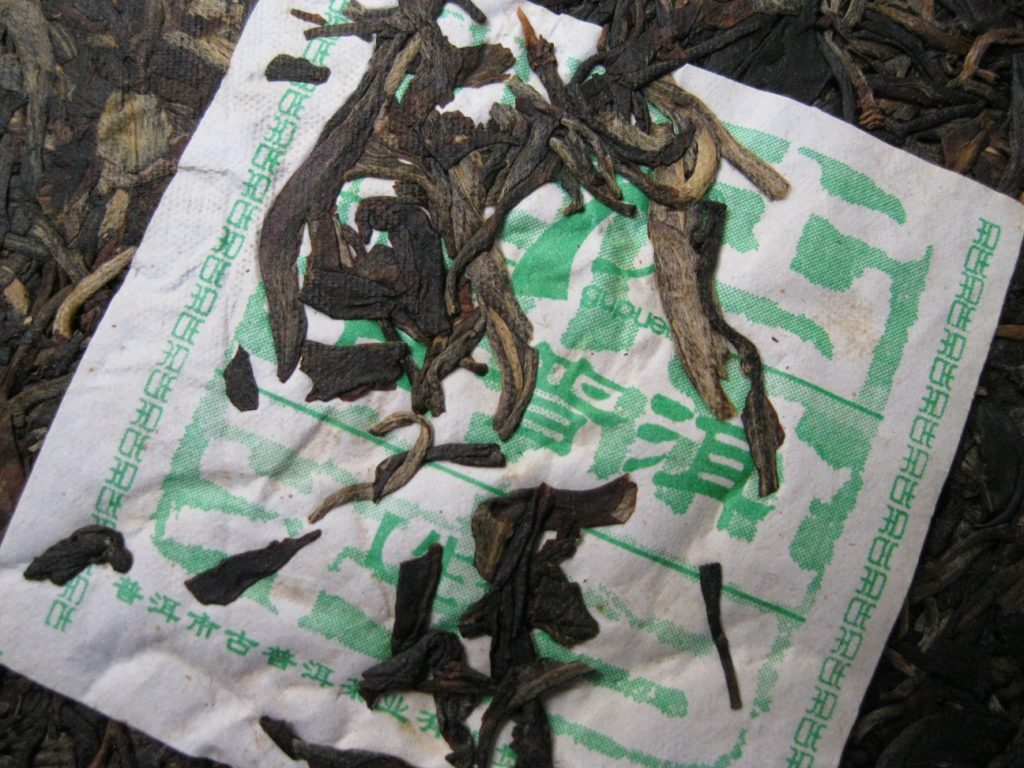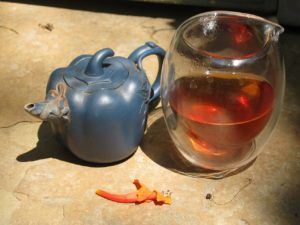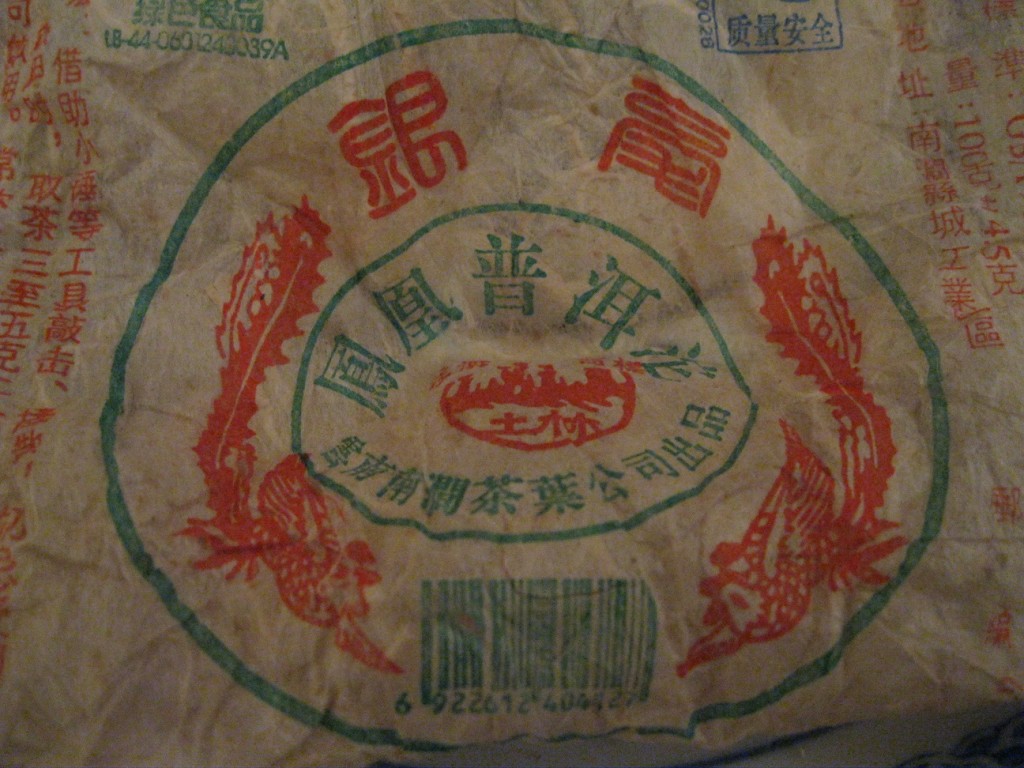Puerh Junky Visits Making Tea
Puerh Junky Visits Making Tea involves a CMS series by the same name. I’ve gotten my hands on a few of the series from the year ’16, even posted fotos of on Instagram to make it official. CMS is technically Yibang CMS and that detail is critical as they possess either material or a processing style that is very Yiwu. . . Yibang being in Yiwu.
The style goes beyond just the stone pressing to encompass the overall softness of taste. Here, the dry leaves give off a slight smoke and kerosene nose that is mostly candy fruity. The candy fruity is very similar to the recently listed Jade Mark, a nose of something like Jolly Rancher watermelon. That kinda fragrance is certainly more Menghai or Lincang.
The first real infusion gives off clarity of about 2.5 outta five. I’ve drunk about 3/4 of this cake and it’s never left any impression. Based on the intensity and height of the aroma, the ole Junky‘s luck may have changed but while sniffing the cloudy brew the thought to lower the water temp occurs.
Consistent with Yiwus, the taste doesn’t jump out at you. It’s still too young to have any of the smooth vanilla or thick texture, but the qi comes on powerfully in the head and chest. Overall, there wasn’t enough to sustain even a modicum of interest.
Several hours later. . .
“It’s good at any temperature,” comments the wife. The hiatus has helped harness hiding sugars. There’s a bit of kerosene, ever so slight. Zero bitterness, even when pushed. Nothing to be said of astringency either. There’s nothing to sink one’s teeth into. Zen brutality.
Day two is much of the same. A thread of freshly mowed grass can be detected in the pitcher, but doesn’t convert into the taste. Pure rock sugar, a very faint sense of something floral, but all completely fades after taking a piece of buttered bread. The following taste is of an insipid green tea. Qi goes to the head in a comprehensive manner, not jagged but with full self-assurance.
Reading through the ’09 comments on an ’08 CMS production that I drank this ’22, one commenter said the tea was “moderately floral and lacking in complexity.” Thirteen years later, the floral note sounds with great perfection, with nice sweetness and thickness. The difference is age. The Puerh Junky assumes Making Tea is in a similar boat. Realistically its about six years away from hitting a decent stride, optimistically three.

